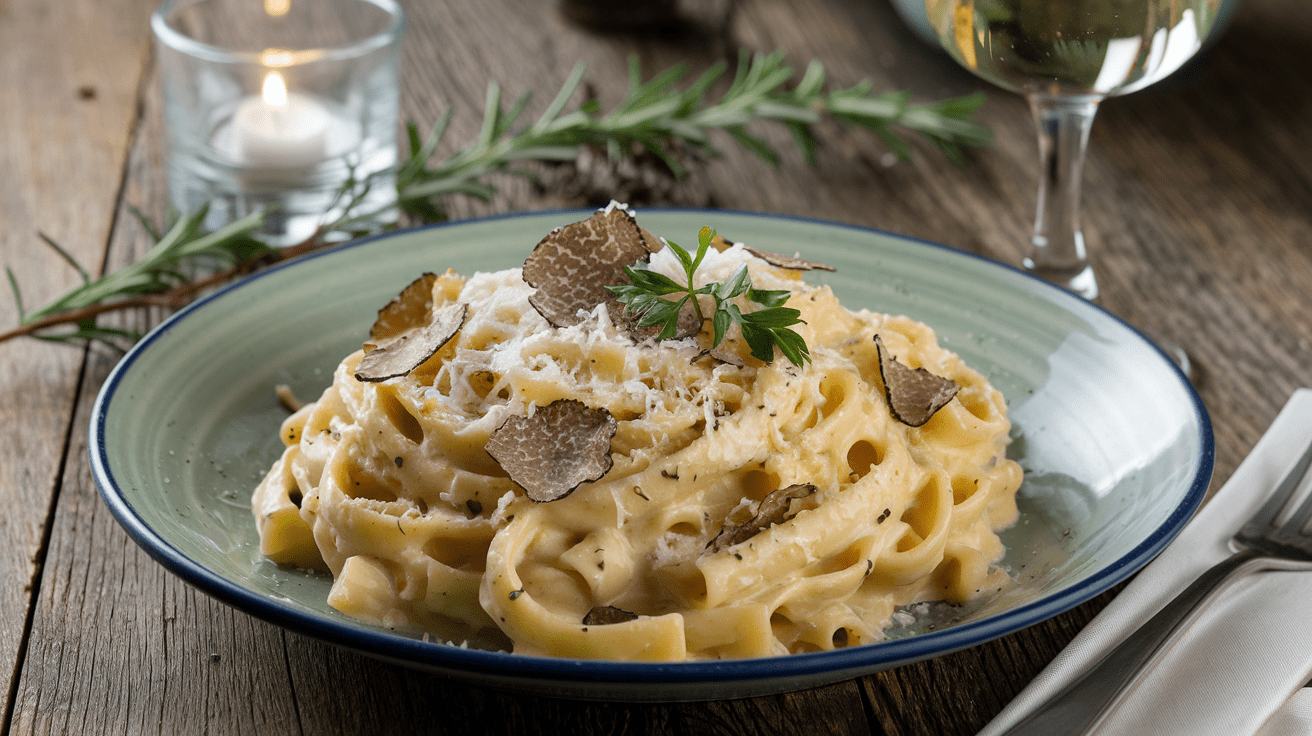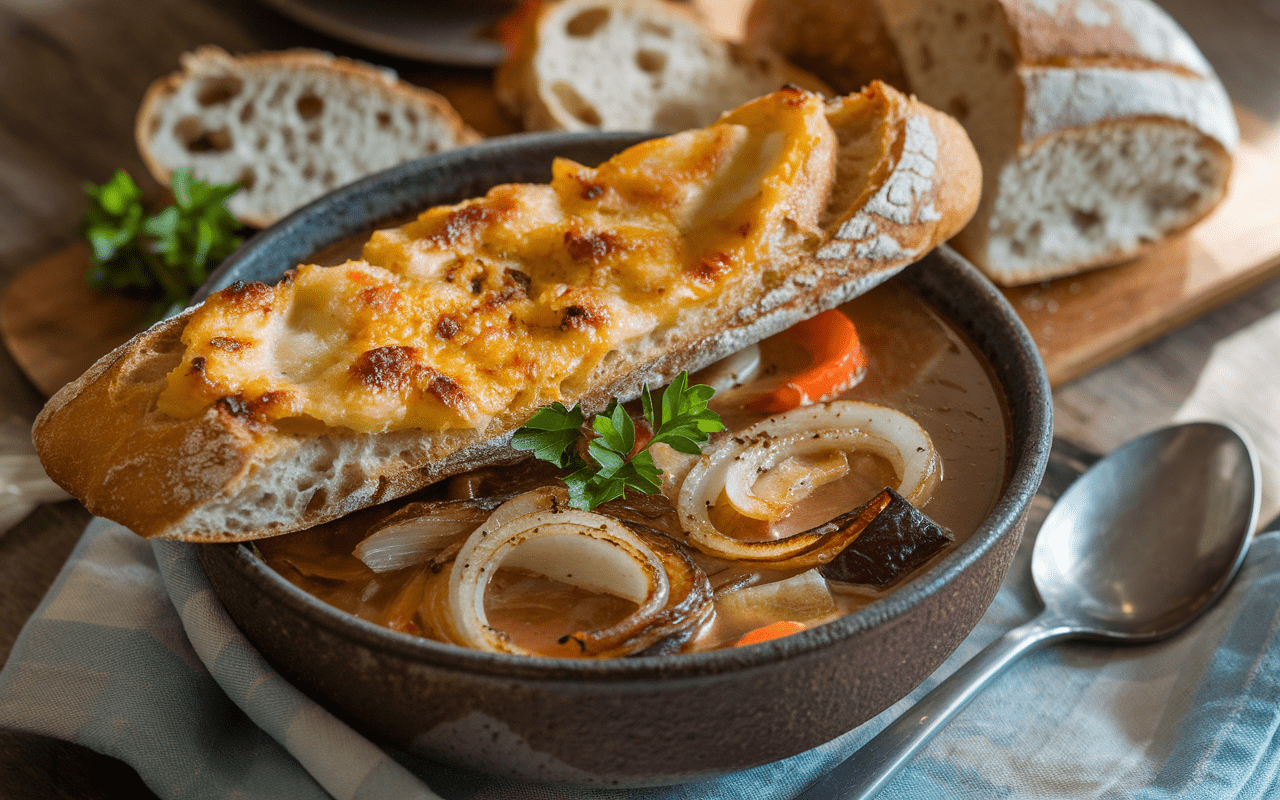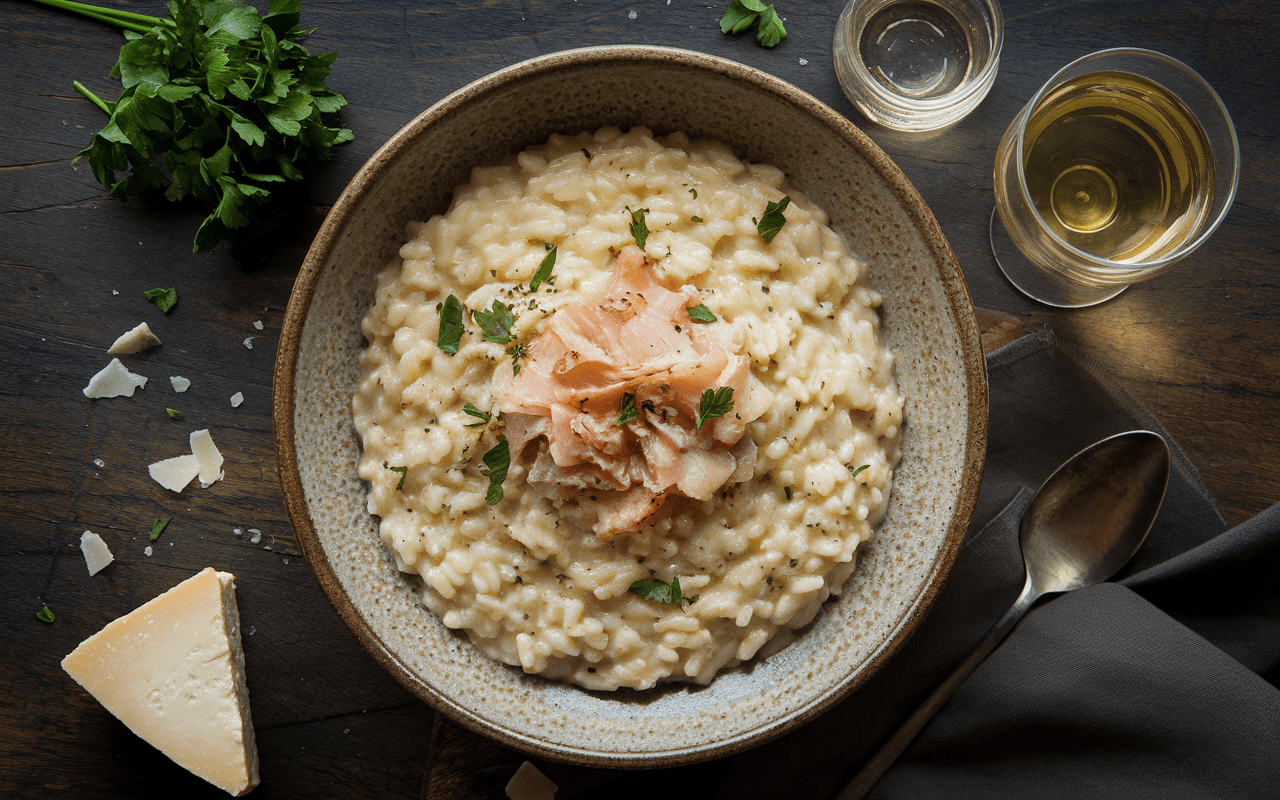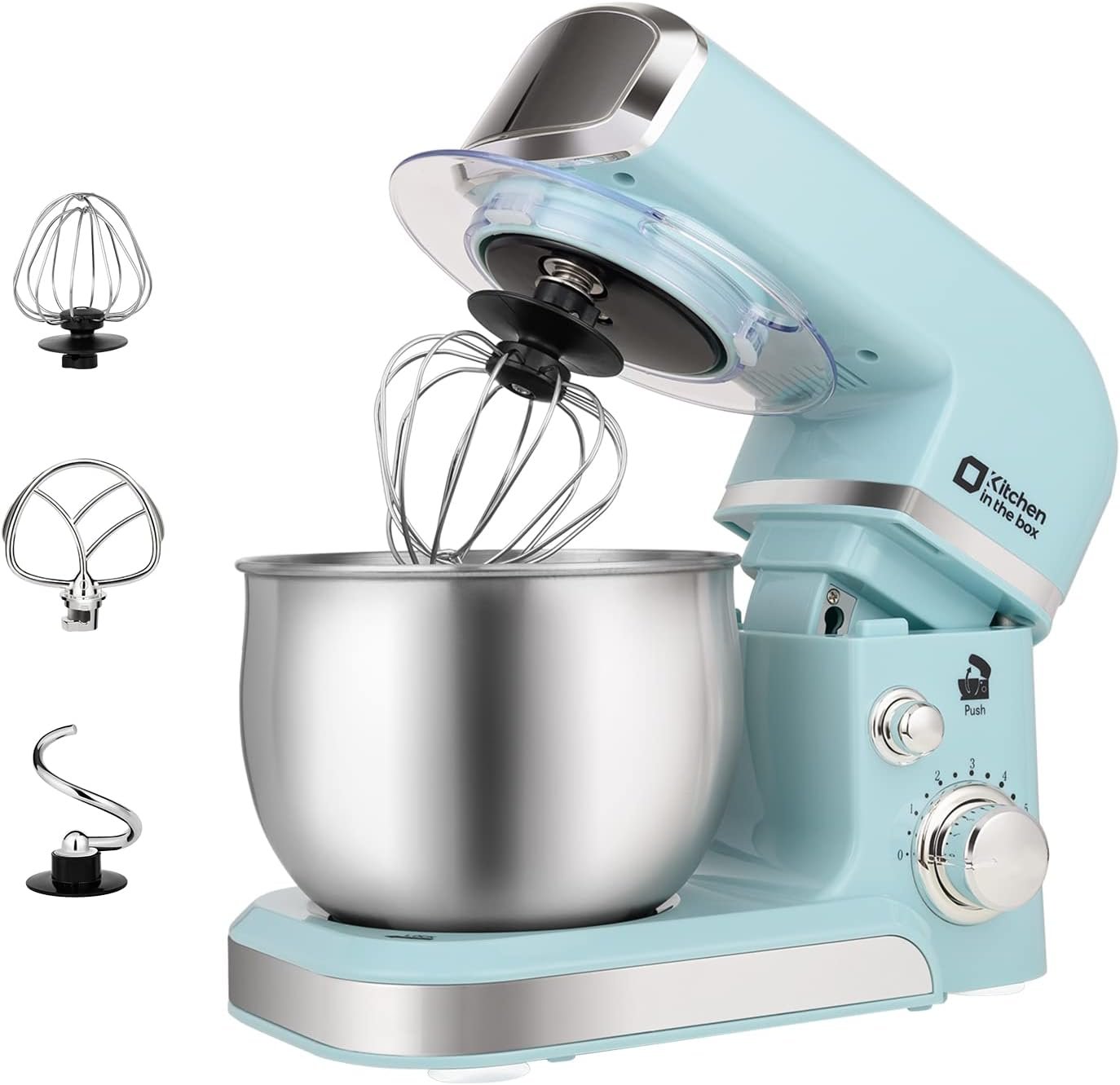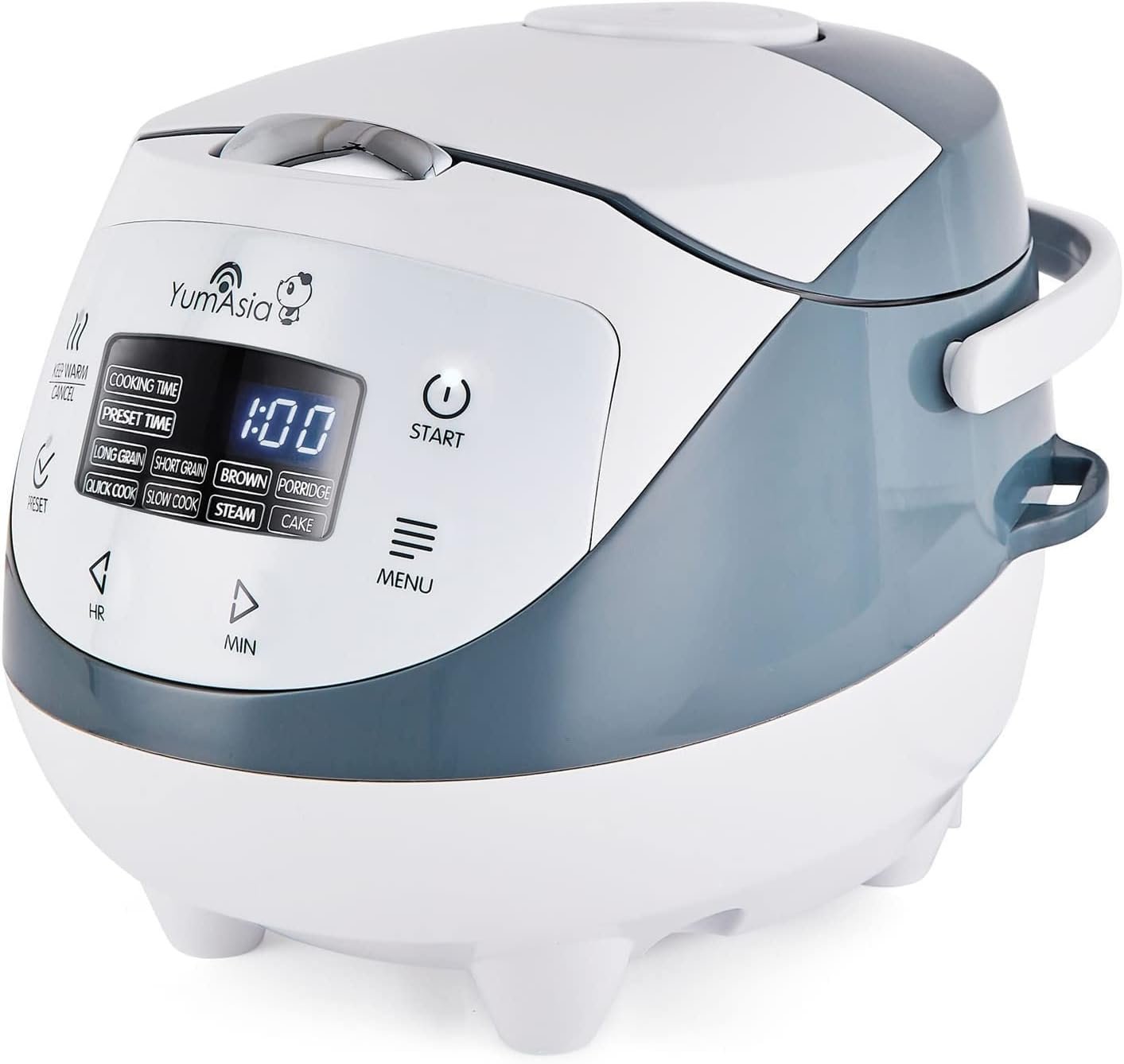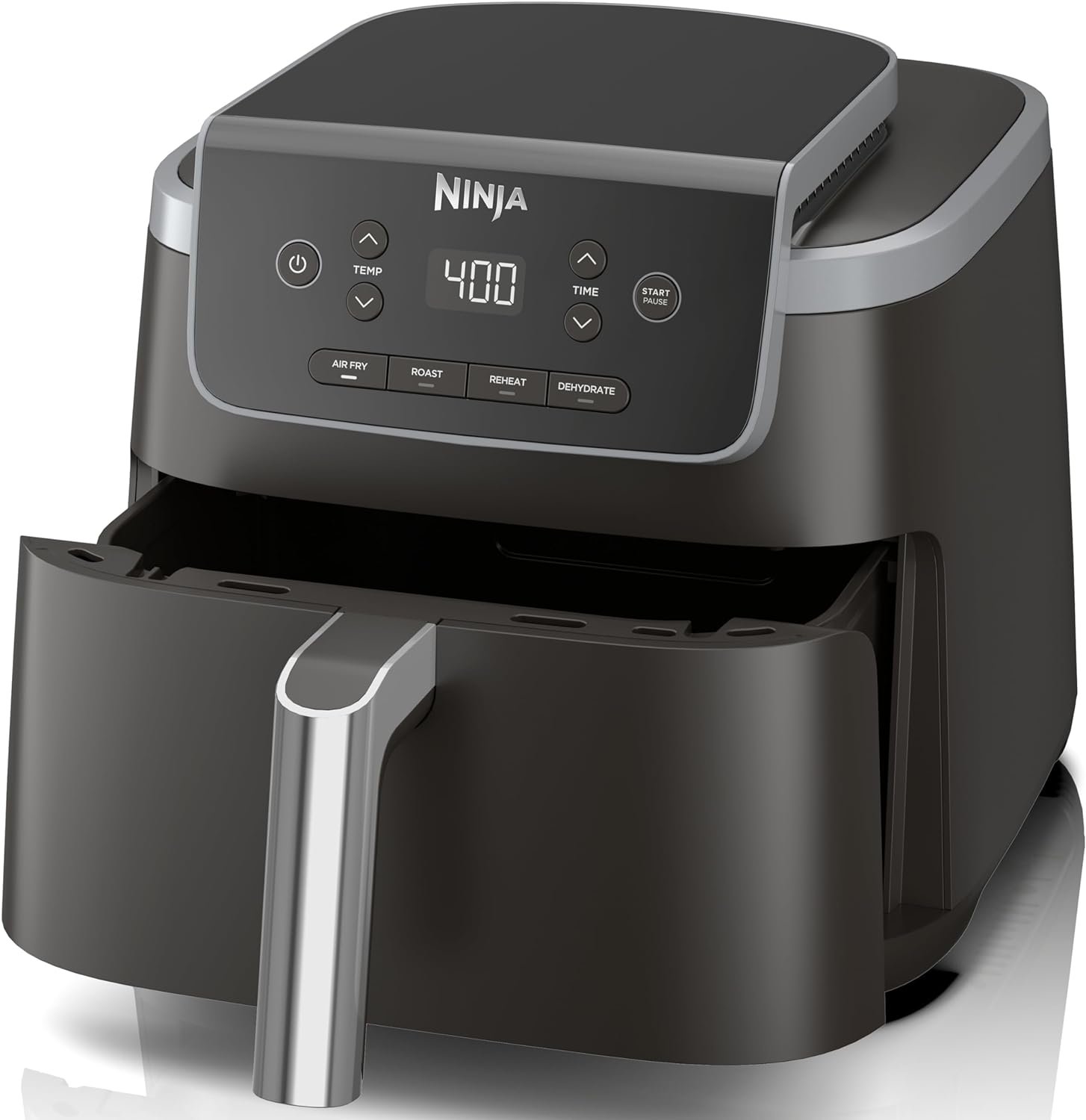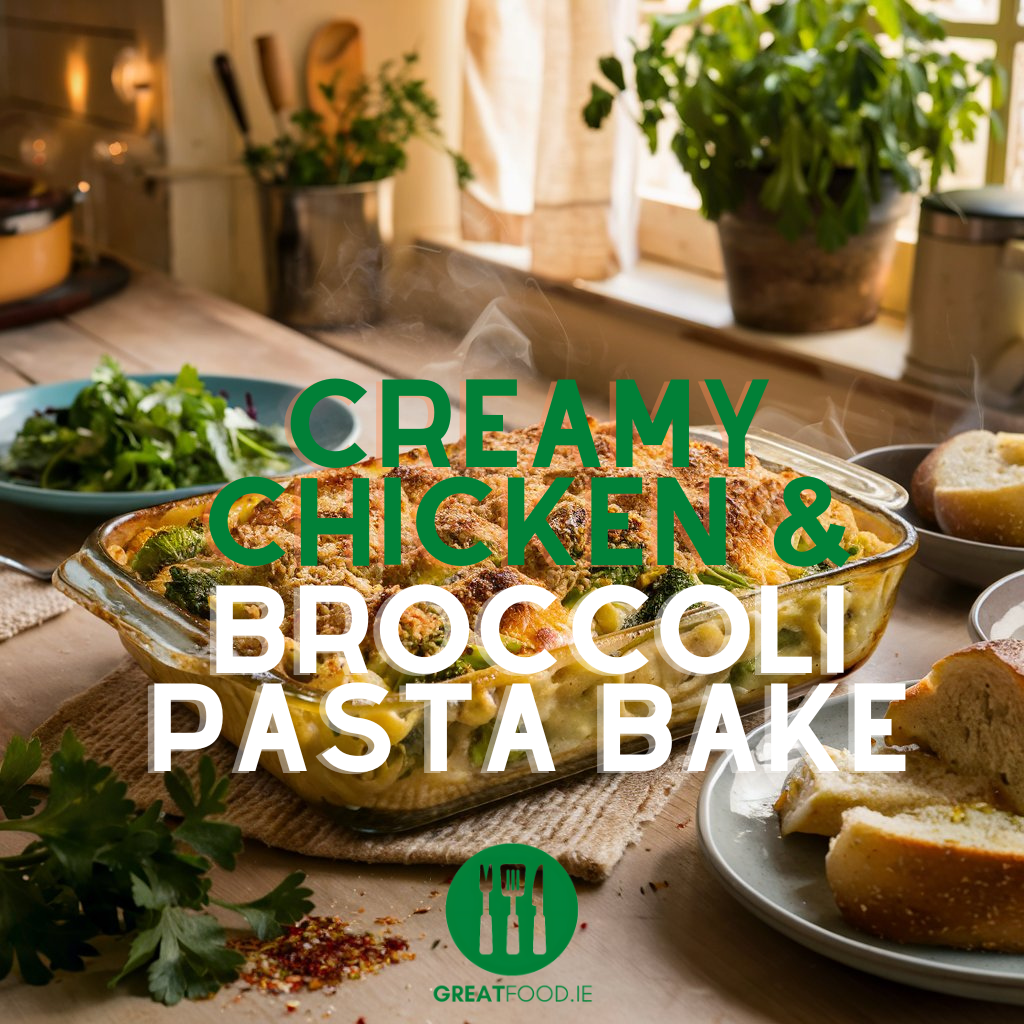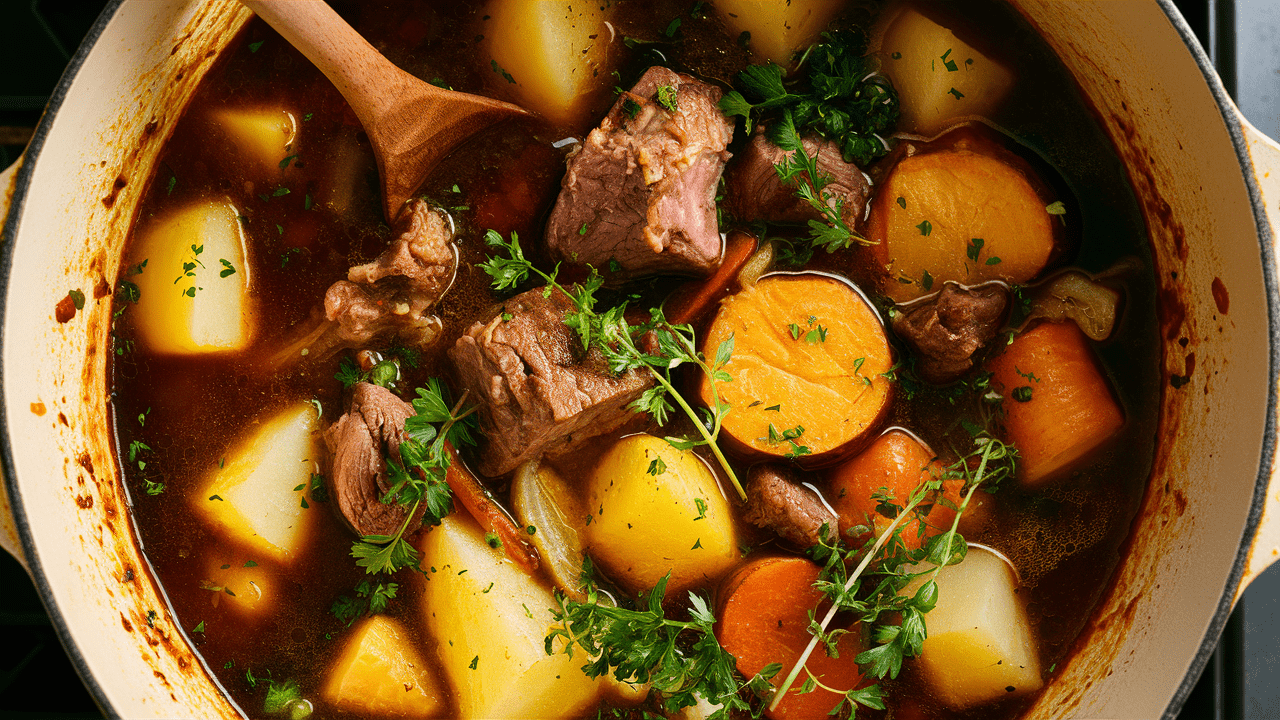Prepare to be warmed from the inside out with this delectable Irish Seafood Chowder recipe. Combining a variety of fresh seafood, hearty vegetables, and a creamy broth, this chowder is the epitome of comfort food. Perfect for any occasion, it brings the flavours of the Irish coast straight to your table.
History of Irish Seafood Chowder:
Did you know that seafood chowder has been a staple in Irish coastal communities for centuries? The use of smoked fish in the chowder not only adds a rich flavour but also harks back to traditional preservation methods used before refrigeration was common. This dish is a true testament to Ireland’s rich maritime heritage and culinary ingenuity.
Serving Suggestions for Irish Seafood Chowder Recipe:
This hearty chowder pairs wonderfully with a side of Irish soda bread or crusty bread, perfect for soaking up the creamy broth. For an extra touch, garnish each bowl with a sprinkle of fresh parsley or a twist of black pepper. A simple green salad dressed with a tangy vinaigrette makes a refreshing accompaniment.
Storing Instructions for Irish Seafood Chowder:
Store any leftovers in an airtight container in the refrigerator. The chowder will keep well for up to three days. If you wish to freeze it, transfer the cooled chowder to a freezer-safe container and it will last for up to three months. Be sure to thaw it in the fridge overnight before reheating.
Reheating Instructions for Irish Seafood Chowder:
To reheat, pour the chowder into a pot and warm it over low heat on the stovetop. Stir occasionally until it’s heated through, ensuring it doesn’t boil to prevent curdling of the cream. Alternatively, you can microwave individual portions in a microwave-safe bowl, heating in 1-minute intervals and stirring in between, until hot.
Conclusion:
We’d love to hear how you enjoyed this recipe! Share your thoughts in the comments below, and don’t forget to subscribe for more delicious ideas. Whether you’re looking to celebrate a special occasion or simply enjoy a comforting meal, this Irish Seafood Chowder is sure to become a favourite in your home.
How to Make Irish Seafood Chowder Recipe
Yum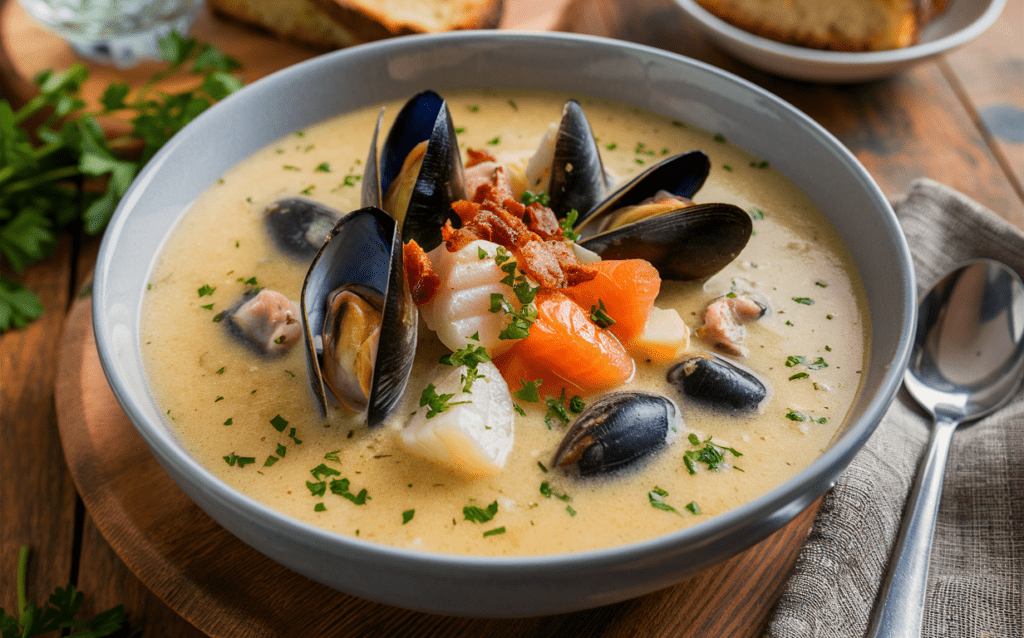
Irish Seafood Chowder Recipe
Description
This hearty and creamy Irish Seafood Chowder recipe combines the finest seafood, fresh vegetables, and a luscious broth to create a comforting and flavourful dish. Perfect for any occasion, this chowder brings the taste of the Irish coast to your table, making it a beloved classic that warms both the heart and soul.
Ingredients
Instructions
Prepare the Base:
-
Cook Bacon
In a large pot, cook the chopped bacon over medium heat until crispy. Remove the bacon and set aside, leaving the rendered fat in the pot.
Sauté the Vegetables:
-
Melt Butter
Add the butter to the pot. Once melted, add the finely chopped onion, celery, and carrot. Sauté until the vegetables are softened, about 5 minutes.
-
Add Garlic
Add the minced garlic and sauté for another minute until fragrant.
Cook the Vegetables:
-
Combine Ingredients
Add the diced potatoes, bay leaf, and thyme to the pot. Stir to combine.
-
Pour Stock
Pour in the fish stock and bring to a boil. Reduce the heat and let it simmer for about 10-15 minutes, or until the potatoes are tender.
Add the Seafood:
-
Add Fish
Add the cod, salmon, smoked haddock, and mussels to the pot. Stir gently to combine.
-
Incorporate Dairy
Pour in the milk and heavy cream. Season with salt and pepper to taste.
-
Simmer
Simmer the chowder for about 10 minutes, or until the fish is cooked through and the mussels have opened. Discard any mussels that do not open.
Finish and Serve:
-
Remove Bay Leaf
Remove the bay leaf from the pot.
-
Add Garnishes
Stir in the chopped parsley and the cooked bacon.
-
Serve Hot
Serve hot with a side of Irish soda bread or crusty bread.
Nutrition Facts
Servings 4
- Amount Per Serving
- Calories 450kcal
- % Daily Value *
- Total Fat 20g31%
- Saturated Fat 10g50%
- Cholesterol 120mg40%
- Sodium 800mg34%
- Potassium 800mg23%
- Total Carbohydrate 28g10%
- Dietary Fiber 4g16%
- Sugars 6g
- Protein 36g72%
- Vitamin A 5000 IU
- Vitamin C 15 mg
- Calcium 150 mg
- Iron 2 mg
- Vitamin D 300 IU
- Vitamin E 2 IU
- Vitamin K 30 mcg
* Percent Daily Values are based on a 2,000 calorie diet. Your daily value may be higher or lower depending on your calorie needs.
Note
- For a richer flavour, use a mix of fresh and smoked fish.
- If fresh fish is not available, frozen fish can be used; just make sure to thaw it thoroughly before cooking.
- Adjust the seasoning to your taste; seafood can sometimes need a bit more salt.
- To make the chowder thicker, mash a few of the potatoes in the pot.
- Discard any mussels that do not open during cooking.
- Serve immediately for the best taste and texture, but it can be reheated gently if needed.


